The best workout routine for beginners is a simple, full-body plan done 3–4 times a week that combines strength training, cardio, and mobility exercises.
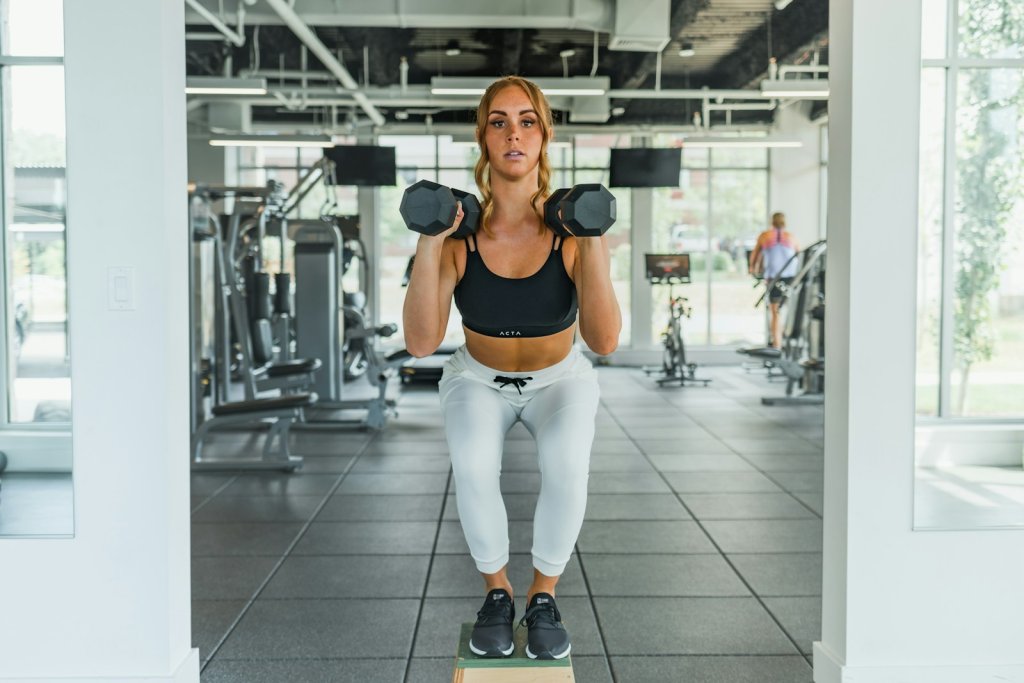
If you’re just starting, the key is not intensity—it’s consistency, proper form, and balanced progress. A beginner routine helps you build strength, improve endurance, boost flexibility, and establish lifelong healthy habits. This guide covers everything you need: step-by-step workouts, scheduling options, tips on form, and answers to common beginner questions.
A beginner workout routine isn’t meant to be followed forever—it’s designed to give you a strong foundation. Most beginners should stick with this plan for 8–12 weeks before making major changes.
Why Beginners Need a Structured Routine
Jumping into random exercises can lead to injury, burnout, or no results. A structured beginner workout provides:
- Balanced strength development (upper, lower, and core).
- Sustainable habit building (short, efficient workouts).
- Safe progression by mastering foundational moves.
- Confidence through clear, achievable steps.
According to the American College of Sports Medicine (ACSM, 2025), beginners should focus on 150 minutes of moderate activity weekly, including at least 2 days of strength training for best health outcomes (ACSM guidelines).
How Many Days Should Beginners Work Out?
For most beginners, 3 days per week is ideal. This gives your muscles time to adapt and recover while building consistency.
Example weekly split:
- Day 1 – Full Body A
- Day 2 – Rest / Light Activity (walking, stretching)
- Day 3 – Full Body B
- Day 4 – Rest
- Day 5 – Full Body A
- Day 6 – Rest / Light Activity
- Day 7 – Optional mobility or light cardio
The Best Workout Routine for Beginners
Warm-Up (5 minutes)
Always start with a warm-up to increase circulation and prevent injury:
- March in place or brisk walk – 1 min
- Arm circles – 30 sec each direction
- Hip circles – 30 sec
- Bodyweight squats – 1 min
- Dynamic stretches (leg swings, torso twists) – 2 min
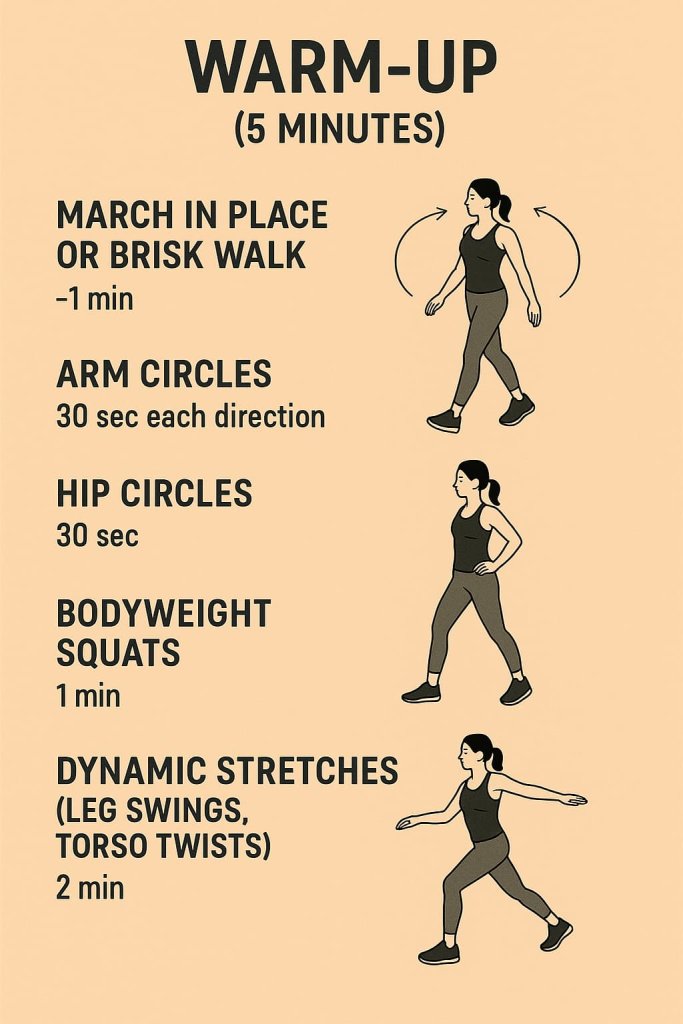
Full-Body Beginner Workout (30–40 minutes)
Workout A (Strength + Core)
- Bodyweight Squats – 3 sets of 10–12 reps
- Push-Ups (Knee or Elevated if needed) – 3×8–10
- Glute Bridge – 3×12–15
- Dumbbell Rows (or backpack rows) – 3×10 each side
- Plank Hold – 3×20–40 seconds
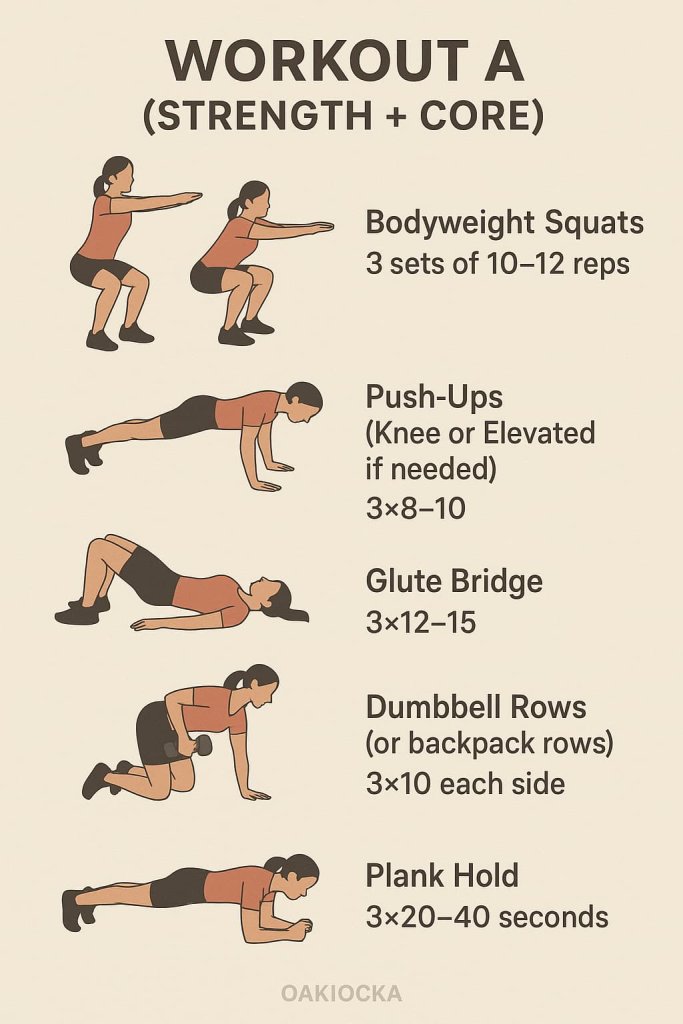
Workout B (Strength + Cardio Mix)
- Step-Ups on a chair/bench – 3×10 each leg
- Overhead Dumbbell Press – 3×10
- Hip Hinge / Deadlift with Light Weight – 3×12
- Mountain Climbers – 3×20 sec
- Bicycle Crunches – 3×12 each side
Pro Tip: Focus on form over speed. If you’re unsure, record yourself or ask a trainer to check technique.
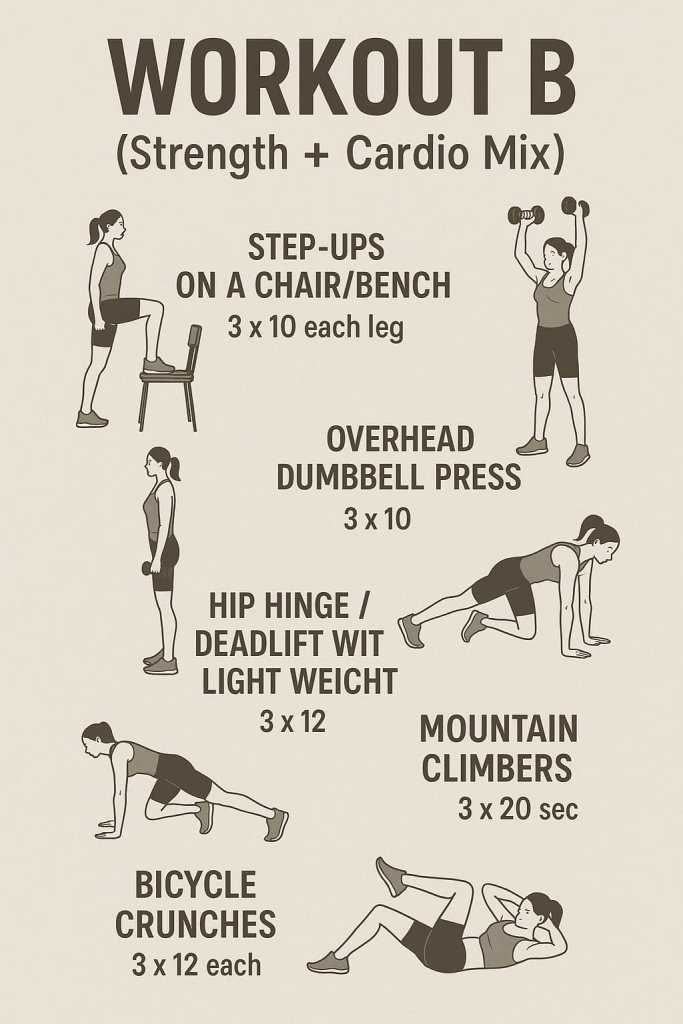
Sample Beginner Weekly Schedule
| Day | Workout | Focus |
|---|---|---|
| Monday | Workout A | Strength & Core |
| Tuesday | Rest / Walking | Recovery |
| Wednesday | Workout B | Strength + Cardio |
| Thursday | Rest / Stretching | Mobility |
| Friday | Workout A | Strength |
| Saturday | Optional Light Cardio (jog, cycling) | Endurance |
| Sunday | Rest | Recovery |
Additional Tips for Beginners
- Start light: Bodyweight or light dumbbells are enough in the first month.
- Track progress: Write down sets, reps, and how you feel.
- Don’t overtrain: Rest days are just as important as workouts.
- Mix in activity: Aim for 8,000 steps per day (Walking, per Women’s Health, 2025).
- Nutrition matters: Pair workouts with balanced meals—lean protein, whole carbs, and healthy fats.
Common Mistakes Beginners Should Avoid
- Skipping warm-ups.
- Overtraining without rest.
- Using poor form on squats, push-ups, or deadlifts.
- Copying advanced gym routines.
- Quitting too soon—results need patience.
Best At-Home Beginner Workout (No Equipment)
If you don’t have access to a gym:
- Jumping Jacks – 3×30 sec
- Wall Sit – 3×30 sec
- Modified Push-Ups – 3×10
- Standing Calf Raises – 3×15
- Bird Dogs – 3×10 each side
- Plank – 3×20–40 sec
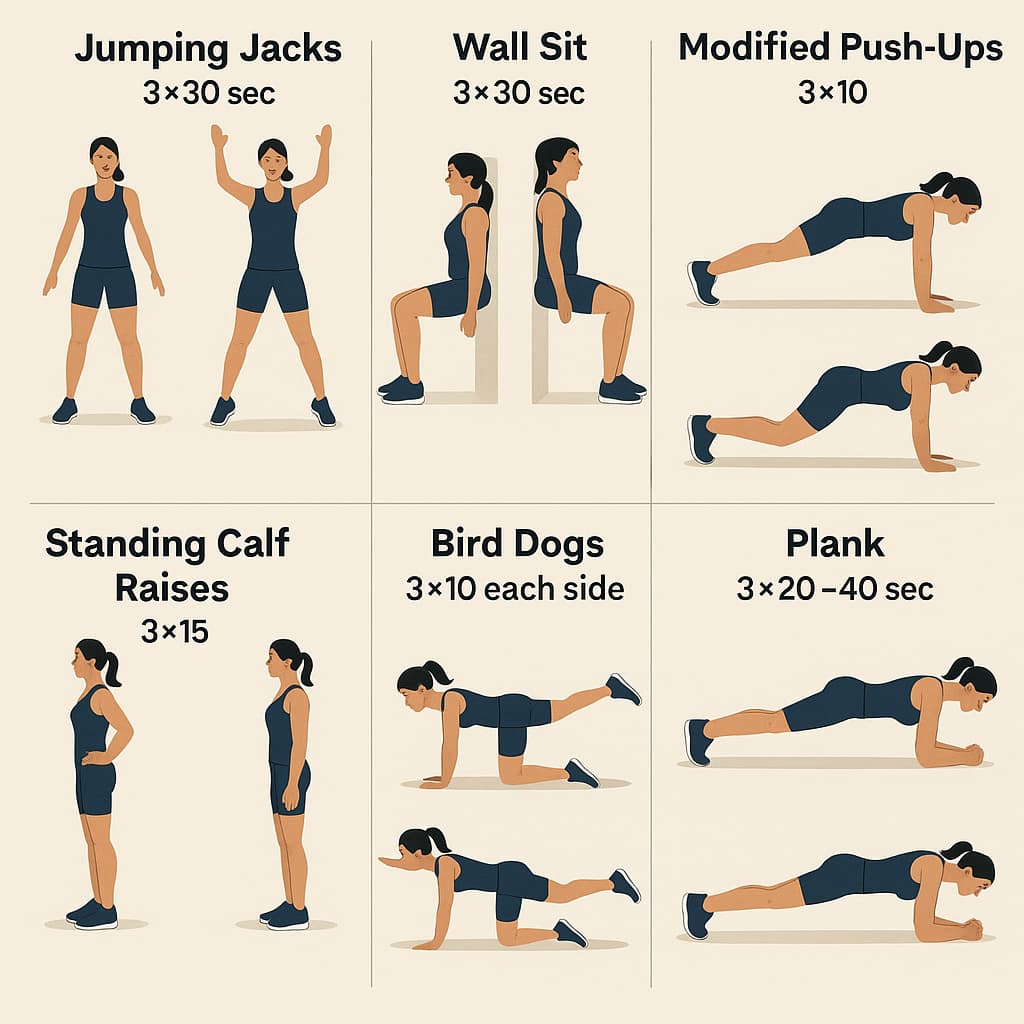
Beginner Cardio Options
- Walking – Start with 20–30 min brisk pace.
- Cycling – Stationary or outdoor.
- Jump Rope – 1–2 min intervals.
- Swimming – Gentle on joints, full-body burn.
Nutrition Tips for Beginners
Your workout is only 50% of the equation—nutrition is the other half.
- Protein: Aim for 20–30g per meal (chicken, tofu, eggs, beans).
- Hydration: 8–10 cups of water daily.
- Carbs: Choose whole grains, fruits, and vegetables.
- Healthy fats: Avocados, nuts, olive oil.
- Recovery snacks: Protein + carbs post-workout (e.g., Greek yogurt with fruit).
👉 Beginners who fuel properly recover faster and stay consistent.
How Many Weeks Should You Follow This Routine?
A beginner workout routine isn’t meant to be followed forever—it’s designed to give you a strong foundation. Most beginners should stick with this plan for 8–12 weeks before making major changes.
- Weeks 1–4: Focus on learning form, building consistency, and getting used to the movements. You’ll notice improved stamina and strength.
- Weeks 5–8: Start adding small progressions—more reps, sets, or slightly heavier weights. Visible results often appear in this stage.
- Weeks 9–12: Your body has adapted to the plan. Keep progressing but also consider swapping in variations (like lunges instead of squats, incline push-ups instead of knee push-ups).
👉 After 12 weeks, don’t throw away the plan—upgrade it by:
- Adding weight or resistance.
- Increasing training frequency (from 3 to 4 days/week).
- Trying intermediate-level exercises and cardio intervals.
💡 Pro Tip: Think of these 8–12 weeks as a foundation phase. Once you’ve built the habit and confidence, you’re ready to step up to the next level.
FAQs About Beginner Workout Routines
1. How long should a beginner workout last?
30–40 minutes including warm-up and cool-down is perfect.
2. Do I need equipment?
No. You can start with bodyweight only. Dumbbells or resistance bands are helpful but optional.
3. When will I see results?
Most beginners feel stronger and more energized in 2–4 weeks, with visible changes in 6–8 weeks (depending on nutrition and consistency).
4. Should beginners do cardio or weights first?
Strength training should come first, followed by cardio, if combining in the same session.
5. How much rest between sets?
60–90 seconds for strength, 30–60 seconds for cardio moves.
6. Can beginners work out every day?
It’s better to rest 2–3 days per week for recovery. You can still walk or stretch daily.
7. What’s the most important tip for beginners?
Consistency matters more than intensity. Focus on steady progress.
Conclusion
Starting a workout routine for beginners doesn’t need to be complicated. Three full-body workouts per week, combined with light cardio and daily movement, are enough to build strength, improve endurance, and kickstart your fitness journey.
Stay consistent, track progress, and celebrate small wins—your body will thank you in weeks to come. Ready to begin? Grab a mat, set aside 30 minutes, and start moving today!
